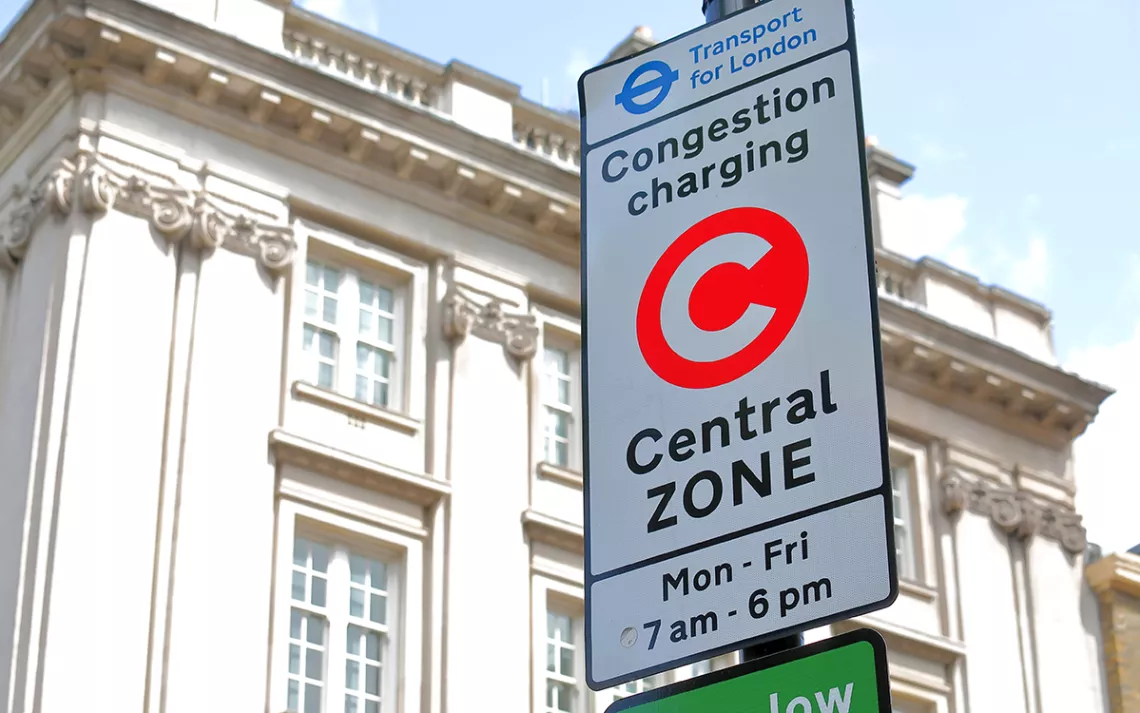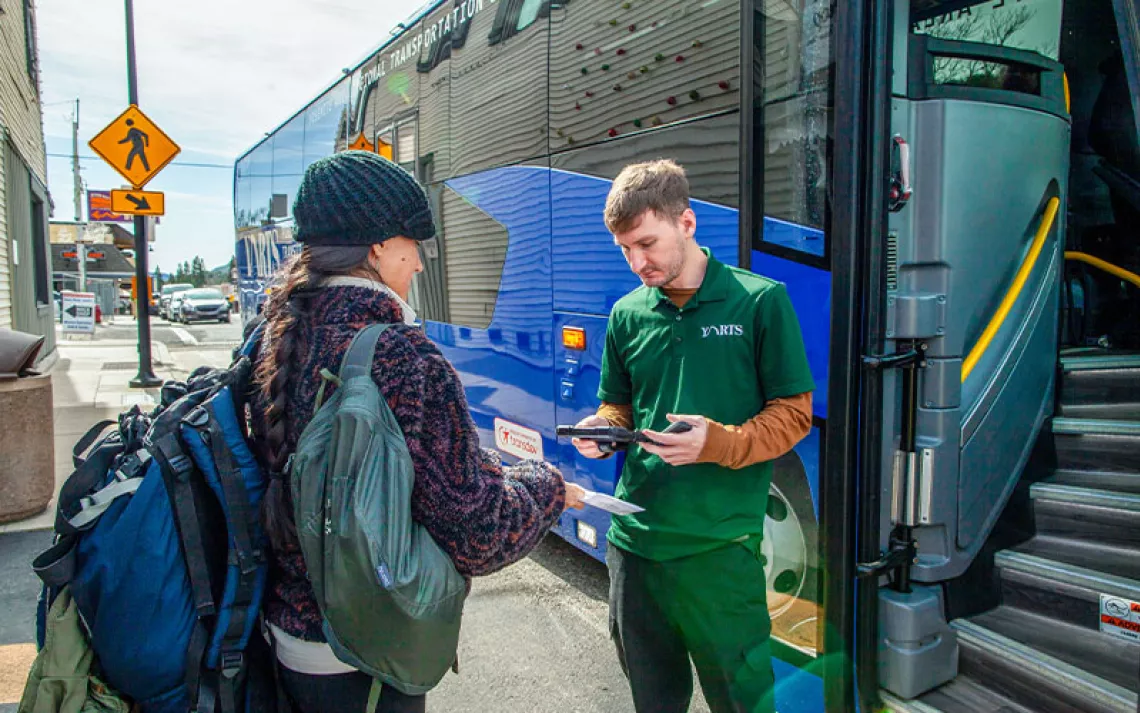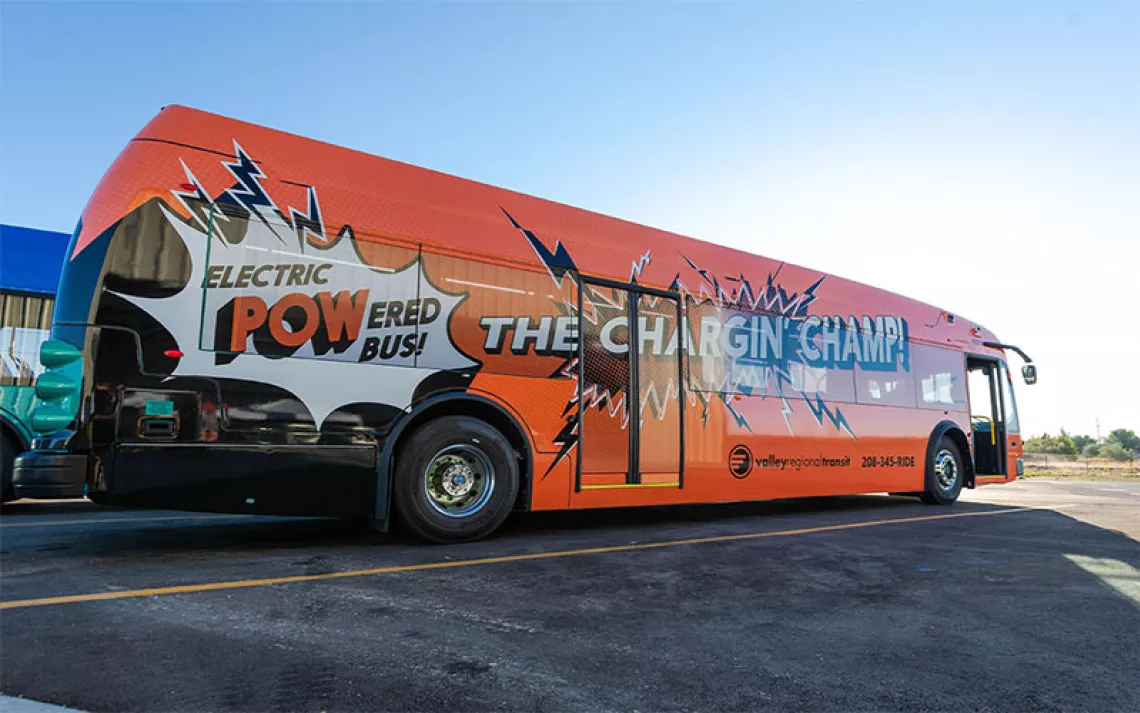Can Congestion Pricing Help Americans Break Up With Their Cars?
Congestion pricing could reduce traffic and generate funds for public transit

Photo by TkKurikawa/iStock
How do you get Americans to drive less? Congestion pricing, or charging people to drive on traffic-clogged roads, is one solution experts say works. But getting politicians and the public on board is no easy feat.
In New York City, the first US city to adopt the policy, it took over 10 years of lobbying and a lot of frustration about the lack of funding for the crumbling subway system to get congestion pricing across the finish line. The summer of 2017—not so affectionately dubbed “the summer of hell”—was a tipping point. Subway delays were so paralyzing that Governor Andrew Cuomo declared a state of emergency. The New Yorker described people sobbing on trains, scared of losing their jobs because of the delays. Policymakers urgently needed more funding for mass transit—and congestion pricing generates a lot of revenue.
The state of New York finally approved a plan earlier this year as part of the state budget. Starting in 2021, drivers can expect to pay around $11 to $14 dollars to enter a congestion zone in the heart of Manhattan, stretching from 60th Street south to the Battery. Eighty percent of the revenue generated will go toward city transit improvements.
Several cities, frustrated by perpetual traffic problems, may soon follow. San Francisco, Los Angeles, and Seattle are all considering congestion pricing policies to alleviate traffic and raise revenue for public transit projects. In cities where congestion pricing has been implemented—London, Stockholm, Singapore, Milan, Gothenburg—the policy has proven remarkably effective at reducing traffic. Pricing roadways encourages people to take public transit, carpool, combine trips, or drive at nonpeak hours.
The greenhouse gas emission reductions are just as exciting. Every city that has implemented a congestion pricing policy has seen a significant reduction in greenhouse gas emissions within priced areas: 14 percent in Stockholm; 17 percent in London; 15 percent in Singapore; 22 percent in Milan.
Congestion pricing reduces greenhouse gas emissions in two ways: Yes, people don’t drive as much, but emissions also dip because people don’t waste as much gas sitting in traffic. “Congestion pricing’s unique contribution to carbon reduction [comes] from the fact that the amount of carbon emissions you get on your trip is affected by the speed at which the vehicle moves. . . . At very low speeds and very high speeds, you get far more carbon per mile,” Michael Manville, associate professor of urban planning at UCLA, said.
There are several congestion pricing models. Cordon pricing draws a boundary around a highly congested area and then charges drivers to cross the boundary. VMT (vehicle miles traveled)–style pricing charges drivers based on the number of miles they travel in a congested area. Corridor pricing charges drivers to enter a specific lane on a clogged freeway. All models can be designed so that the toll prices fluctuate along with the speed of traffic.
Of the handful of cities considering congestion pricing, Los Angeles might be the most surprising—but not for lack of traffic. The city is built around the car. Sluggish freeway commute times are still often much faster than public transit alternatives. Could congestion pricing help Los Angeles break its nasty car habit?
Los Angeles got serious about considering congestion pricing as a solution for its traffic problems earlier this year, when the L.A. Metro’s board of directors approved a two-year-long study. Josh Schank, Metro’s chief innovation officer, said a well-designed congestion pricing model could change Angelenos' thinking around transportation. “If congestion pricing is done right, it will influence people’s long-term decisions about whether to buy a car [and] how much to rely on a car, and that can really make a difference over the long haul in terms of climate change,” Schank said.
Mayor Eric Garcetti has expressed cautious optimism about the policy’s potential. Still, any congestion pricing proposal will likely face stiff opposition from commuters. “It challenges what Angelenos see as their God-given right to drive anywhere they want,” Manuel Pastor, director of USC’s Program for Environmental and Regional Equity, told the Los Angeles Times earlier this year. “It would be a challenging shift in a city that’s very much a car culture and an individual culture.”
Despite commuter resistance, advocates say congestion pricing represents one of the only meaningful solutions to Los Angeles’s traffic problems. “It’s time to be honest with voters that if they really are sick of congestion, the only thing that has ever been demonstrated to reduce it is congestion pricing. So either we can do this or everyone has to stop complaining,” Manville said.
Nationwide, many policymakers worry that congestion pricing could disproportionately impact low-income drivers, who may lack good transportation alternatives and the ability to shift their schedule to avoid tolls.
A study by the Seattle Department of Transportation, which focused on the equity implications of congestion pricing, found that the policy can be implemented equitably—if the revenue from the policy is invested in transit and vulnerable communities, and if cities provide exemptions for low-income drivers.
John Rennie Short, professor of public policy at the University of Maryland, Baltimore County, said that equity concerns around congestion pricing can be “a red herring” in the congestion pricing debate—in many cities, the vast majority of low-income people commute into the city center via public transit. “There are very few low-income people driving into work in Manhattan,” Short said. (A Community Service Society study found that only 2 percent of the working poor in the outer-borough would regularly pay a congestion fee.)
Congestion pricing proponents argue that the policy can help advance equity by generating funding to improve the public transit systems many low-income people rely on. “Does it make sense to threaten the livelihoods of New Yorkers who lose their jobs because they can’t get to work because the mass transit system isn’t working?” Arturo Garcia-Costas, a program officer at the New York Community Trust, said.
In cities around the world where congestion pricing has been implemented, the policy has resulted in modest increases in public transit ridership—a Seattle Department of Transportation analysis of the Stockholm congestion pricing pilot found a 4 percent increase in transit ridership. But modest transit ridership increases are supplemented by other climate-friendly behavior, like combining trips and carpooling.
Long-term investment in public transit—funded by congestion pricing—could also help change the calculation around driving. As transit speed and reliability improves over time, more people may decide to ditch their cars and hop on a bus.
Congestion pricing may be the start of a larger shift toward charging people more to drive. After all, should it be so easy drive alone to work in the era of climate change?
 The Magazine of The Sierra Club
The Magazine of The Sierra Club



